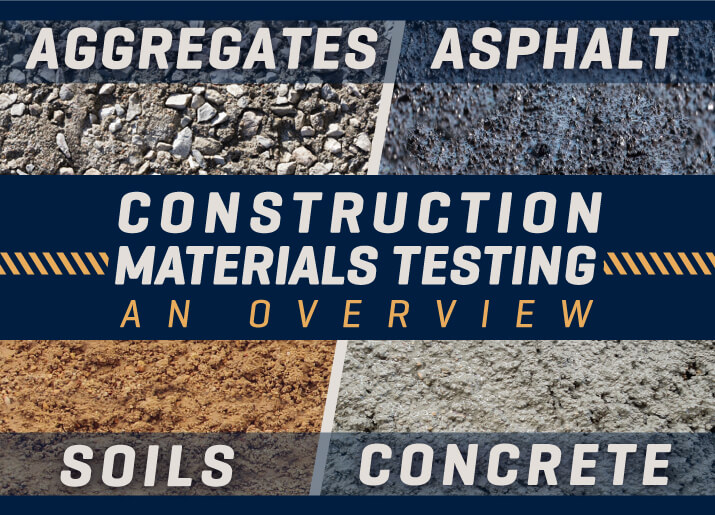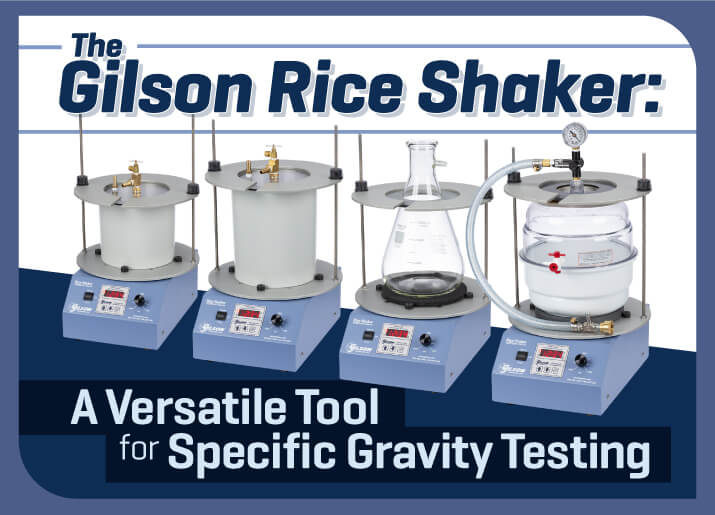Riffle splitters were a popular tool in sampling and dividing, but had limitations, such as a narrow particle size range, uneven particle distribution, and poorly divided samples. To solve these issues, Gilson designed the Universal Splitter models with adjustable chute widths, a closed hopper to evenly distribute samples, and other features to produce more accurate and efficient sampling and dividing results.
- Log in
- Favorites List
-
Shopping Cart
You have no items in your shopping cart.
- Gilson Chat
Blog posts tagged with 'Aggregate Testing'
Have questions about your materials testing equipment? We have the answers to these questions and much more right here! Check back monthly for long-form blog posts, how-to guides and infographics. We’ll address industry insights, the operation and maintenance of specific equipment, and our product line recommendations, all designed to better serve you.
Bookmark this page, add it to your RSS reader, or subscribe to our newsletter, so you never miss a hot topic.
Determining relative density, or specific gravity, allows accurate conversion of volumes to gravimetric weights for proportioning materials. Learn more about relative density/specific gravity test methods and the equipment used to perform this laboratory test.
The term construction materials testing sounds like a catch-all term for analyzing everything from nails to doorknobs. However, for the civil engineering industry, it has come to mean the characterization of a handful of things by using specific test methods in a construction materials testing laboratory: concrete, aggregates, asphalt, and soils. This blog will take a high-altitude view of what construction materials are, the most important properties to test for, and the right equipment to get the job done.
If you regularly perform asphalt theoretical maximum specific gravity (Rice) tests, the Gilson Rice Shaker is a time-saving tool to have in your lab. Find out why this unit is the key to determining accurate specific gravity determinations for asphalt, aggregates, and soils.
Test methods for dry granular materials must be built around the flowability of the material. No sampling, sizing, or handling method can be performed accurately or efficiently if it does not work in harmony with the material's flow properties.
Every stage of sampling, dividing, and testing granular material is affected by its flow properties. Understanding a particular material and the unique factors that impact its flowability increases the efficiency and accuracy of your laboratory testing and can even help control your budget. In this article, we discuss what equipment is best suited for your testing application.
Construction aggregates are traditionally mined or extracted from natural sand and gravel deposits or geological rock formations, then further crushed and sorted into size fractions for blending. In this blog article, we discuss the tests and equipment to determine the characterization of aggregate shape properties for roads and structures.
Particle size gradation is the most often-performed test on aggregates, and effective characterization can’t move forward without it. Testing screens offer an efficient and cost-effective method for accurate size determinations of coarse materials. This blog post will help you select the right Gilson Screen Shaker for your testing applications.
Sulfate Soundness of Aggregate, procedures for this popular test method are straightforward. In this blog post, we will discuss why the soundness of aggregate is necessary, what the procedures are when using either magnesium or sodium sulfate, and what equipment is needed to perform the test.
In this blog post, we focus on the specialty large volume splitters. These sample dividers you may not see every day. They have unique features that could solve a problem for you when sample dividing coarse aggregates.
- 2025
- 2024
- 2023
- 2022
- 2021
- 2020
- 2019
- 2018
- 2017
- 2016
- 2015

























